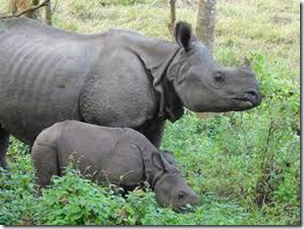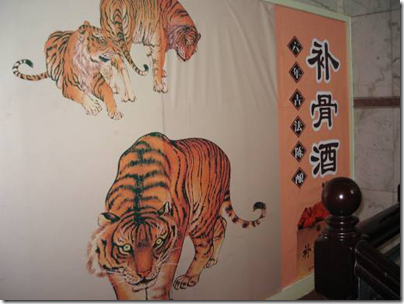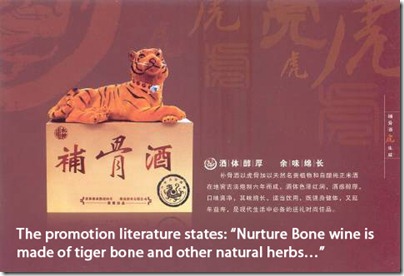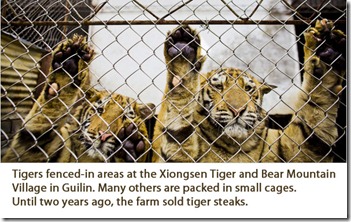Het helpt de natuurbescherming in Nepal niet echt als er door wilde dieren mensen worden gedood – ook al krijgen de nabestaanden tegenwoordig financiële compensatie van de natuurbeschermingsorganisaties.
Junga Bahadur Gurung probeerde gisteren een neushoorn weg te jagen die stond te eten van het veldje waar groente werd gekweekt. Het getergde dier nam een aanloop en verwondde Gurung zodanig dat hij vanmorgen overleed. Twee dagen eerder waren twee dorpsgenoten gedood door wilde olifanten. Beide incidenten vonden plaats in Chitwan, nabij het nationale park.
 Het is geen uitzondering in Zuid-Nepal, in de nabijheid van de wildparken. In toenemende mate hebben mensen last van wilde dieren. Of hebben wilde dieren last van een toenemend aantal mensen? Het is een kwestie van paradigma, zullen we maar zeggen, maar feit is dat de populariteit van wildbescherming te lijden heeft onder een toenemend aantal encounters tussen mens en dier, veelal met dodelijke afloop.
Het is geen uitzondering in Zuid-Nepal, in de nabijheid van de wildparken. In toenemende mate hebben mensen last van wilde dieren. Of hebben wilde dieren last van een toenemend aantal mensen? Het is een kwestie van paradigma, zullen we maar zeggen, maar feit is dat de populariteit van wildbescherming te lijden heeft onder een toenemend aantal encounters tussen mens en dier, veelal met dodelijke afloop.
Overigens is die dodelijke afloop een wederzijds risico, want flink gestroopt wordt er ook, met name neushoorns en tijgers.
‘Een dode tijger is meer waard dan een levende’, is een bekend credo onder conservationists. Een wilde tijger levert veel geld op, heel veel geld. Waarom? Omdat de ‘markt voor tijgeronderdelen’ sterk aan het groeien is.
Chinese mannen geloven dat je van het eten van gemalen tijgerbotten potenter (of minder impotent) wordt, en het zou kwalen als reuma verhelpen. Een huid van een wilde tijger levert tienduizenden dollars op, een mooie klauw een paar duizend. Bovendien wordt er van tijgers wijn gestookt waaraan bijzondere kwaliteiten worden toegedicht: “One Glass A Day Keeps Viagra Away.”
In China zijn een aantal tijgerkwekerijen die door de Chinezen op symposia over natuurbescherming worden geafficheerd als een ‘maatregel om het uitsterven van tijgers te helpen voorkomen’ – maar dat is schone schijn. Het is gewoon bio-industrie, bedoeld voor consumptie en met een winstoogmerk voor investeerders. Een tigerfarm blijkt zelfs een negatief effect te hebben op de bescherming van hun wilde soortgenoten: doordat de vraag naar ‘tijgeronderdelen’ door deze farms toeneemt, wordt de druk op de resterende tijgers in het wild steeds groter.
Tijger kweken in een tiger farm kost vele duizenden dollars aan food and lodging plus verzorging. Dat is veel duurder dan een arme sloeber in Zuid Nepal of in India een handvol roepies te betalen om een loslopende tijger te stropen, en met eenzelfde bedrag de dienstdoende parkopzichter en douanebeambte om te kopen zodat zij de verkeerde kant opkijken.
Bovendien: een wilde tijger smaakt lekkerder dan een tamme, vinden de Chinezen – net zoals wij rond Kerst over konijnen denken.
Uit de New York Times van 12 Februari 2010:
Tiger Farms in China Feed Thirst for Parts
By Andrew Jacobs
GUILIN, China, 12 February 2010 — The crowd-pleasing Year of the Tiger, which begins Sunday, could be a lousy year for the estimated 3,200 tigers that still roam the world’s diminishing forests.
With as few as 20 in the wild in China, the country’s tigers are a few gun blasts away from extinction, and in India poachers are making quick work of the tiger population, the world’s largest. The number there, around 1,400, is about half that of a decade ago and a fraction of the 100,000 that roamed the subcontinent in the early 20th century.
Shrinking habitat remains a daunting challenge, but conservationists say the biggest threat to Asia’s largest predator is the Chinese appetite for tiger parts. Despite a government ban on the trade since 1993, there is a robust market for tiger bones, traditionally prized for their healing and aphrodisiac qualities, and tiger skins, which have become cherished trophies among China’s nouveau riche. 
With pelts selling for at least $20,000 and a single paw worth as much as $1,000, the value of a dead tiger has never been higher, say those who investigate the trade. Last month the Indian government announced a surge in killings of tigers by poachers, with 88 found dead in 2009, double the previous year. Because figures are based on carcasses found on reserves or tiger parts seized at border crossings, conservationists say the true number is far higher.
“All of the demand for tiger parts is coming from China,” said Belinda Wright, executive director of the Wildlife Protection Society of India. “Unless the Chinese change their attitude, the tiger has no future on this earth.”
Although conservationists say India must do a better job of policing its 37 tiger reserves, they insist that the Chinese government has not done all it can to quell the domestic market for illicit tiger parts. Anti-trafficking efforts are haphazard, experts say; China bans the use of tiger parts in traditional Chinese medicine but overlooks the sale of alcohol-based health tonics steeped in tiger bone.
It is a gray area that has been exploited by Chinese tiger farms, which raise thousands of animals with assembly-line efficiency.
If there is any mystery about what happens to the big cats at Xiongsen Tiger and Bear Mountain Village in Guilin, it is partly explained in the gift shop, where fuzz-coated bottles in the shape of a tiger are filled with “bone strengthening” wine. The liquor, which costs $132 for a six-year-old brew, is sold openly across the surrounding Guangxi region and beyond.
 “This stuff works wonders,” said Zhang Hanchu, the owner of a spirits shop in Guilin. A daily shot glass of the rice-based alcohol, he said, can reduce joint stiffness, treat rheumatism and increase sexual vigor. With the Year of the Tiger nearing, demand has been soaring, he said.
“This stuff works wonders,” said Zhang Hanchu, the owner of a spirits shop in Guilin. A daily shot glass of the rice-based alcohol, he said, can reduce joint stiffness, treat rheumatism and increase sexual vigor. With the Year of the Tiger nearing, demand has been soaring, he said.
Opened in 1993 with financing from the State Forestry Administration, Xiongsen is China’s largest tiger-breeding operation. Some of its 1,500 tigers roam treeless, fenced-in areas, while many others are packed in small cages where they pace agitatedly.
Those who pay the park’s $12 entry fee are treated to an extravaganza of tigers jumping through rings of fire or balancing on balls; if the crowds are large enough, workers will place a cow and a tiger in an enclosure with predictably gruesome results.
Until a spate of negative press two years ago, Xiongsen proudly sold tiger steaks at its restaurant as “big king meat.” These days, the park takes a more low-key approach. The word “tiger” no longer appears on the wine packaging — “rare animal bones” is used instead — although those who sell the wine say the key ingredient remains tiger bone.
On a recent visit, a regular stream of cars, some with government license plates, pulled up to a building at the center of the park and drove away with their trunks full of Xiongsen’s wine tonic.
A large sign in the building’s interior declares “Protecting Wild Animals is the Bounden Duty of Every Citizen.”
Uit een Chinese krant over tijgerwijn:
China Youth Daily Special Report
ZHANG Kejia
Staff Reporter
“This is a whole tiger carcass”, said a manager of Xiong Sen Wine Industries Limited
Company as he lifted a skeleton from a huge vat of wine in an underground brewery.
Xiong Sen Wine Industries Limited Company is based in Pingnan County, Guangxi
Zhuang Autonomous Region of China and is a production company within the famous
Guilin Xiong Sen Tiger and Bear Farm.
 I showed surprise and skepticism about tiger wine, asking: “Are you sure this
I showed surprise and skepticism about tiger wine, asking: “Are you sure this
is made of genuine tiger bone?”
“Of course”, the manager replied. “I will open any vat you pick, and you will see that
there is a whole tiger carcass inside.”
The underground brewery is dark and damp, ideal environment for brewing wine. The factory has three breweries, with a total capacity of 8000 tons. Stopping halfway through the long room, the manager lifted the cover of one vat. The strong smell of wine hits the nostrils. The vat is chest high, much smaller than several rows of large vats in the room. The liquid inside is black and shinny. “Why is it this color? Isn’t it brewed with rice?” this reporter asks.
“These shorter vats contain older tiger bone wine ─ at least three years old. Those taller vats are brewed more recently. The color would be lighter.” The manager lifted a rope hanging on the edge of the vat, and a black carcass emerged. “See,” he said, “this is the
tiger’s foot, its front leg and knuckles.”
The fur on the tiger paw and leg is vaguely visible.
“Does each vat have one tiger carcass?”
“Yes”, the manager said as he lifted the carcass higher. “This is the tiger’s head and its teeth.” The tiger teeth are white, in contrast with the pitch black color of the other parts of the tiger body.
“How can you distinguish these are tiger bones from those of some other animal?”
“Tiger teeth are pointed, see, different from other animals,” the manager explained. “Every tiger has a tag put on its ear at birth. These are endangered animals. The tag
references s are kept in an archive, so the identity is unmistakable.”
“How old is this tiger?”
“I don’t know about that” he answered. “Feel the top of its mouth ─ quite rough.” He ladled up some wine and offered it for tasting.
I declined.
“Don’t worry” he said. “It helps men to be strong, vigorous and to live longer. It helps women to have healthy bodies and skin. It cures illness and tones the body.” Noticing that I am still hesitating, he added: “The director of the district always asks for this
wine every time he visits. This vat has been brewing for eight years.”
According to the manager, the older the wine, the more effective it is. Wines currently
on the market are at least three years old.

http://www.tehelka.com/story_main48.asp?filename=Ne251210Coverstory.asp
Zie ook bovenstaand ontluisterend verhaal van twee Tehelka-journalisten die onlangs zijn geïnfiltreerd in het netwerk van stropers en kopers.